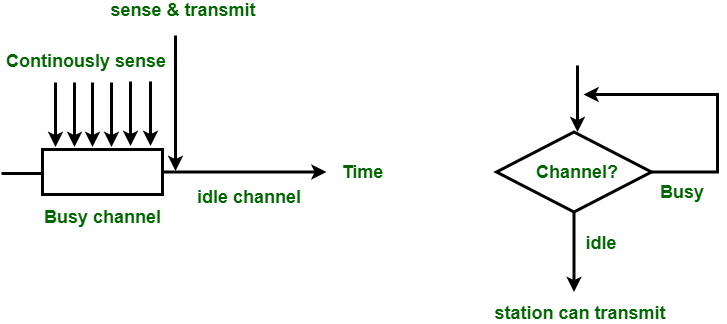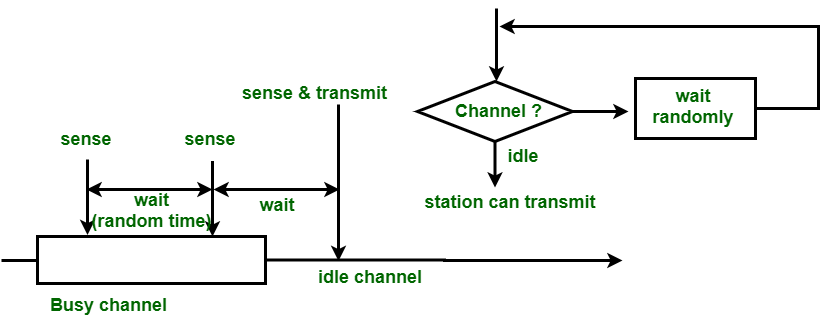先决条件–载波侦听多路访问(CSMA)
1. 1永久CSMA:
在1永久CSMA中,站点连续感测信道以检查其状态(即空闲或忙碌),以便其可以传输数据。如果信道繁忙,站将等待信道变为空闲状态。当站发现空闲信道时,它将以概率1在没有任何延迟的情况下将帧发送到信道。由于概率1,它被称为1-persistent CSMA。这种方法的问题是冲突的机会很大,因为两个或多个站可以找到空闲状态的信道并同时发送帧。在发生冲突时,站点必须等待随机时间,信道空闲后才能重新开始。

2.非持久性CSMA:
在非持久CSMA中,具有帧的站仅发送信道感知。在空闲信道的情况下,它将立即将帧发送到该信道。如果发现信道繁忙,它将等待固定的时间,然后再次感觉到电台状态为空闲或繁忙。在这种方法中,当站检测到先前传输的结束时,它不会立即仅出于捕获信道的目的而立即感知信道。这种方法减少了冲突的机会,但降低了网络效率。

1持久性CSMA与非持久性CSMA的区别:
| Basis | 1-persistent CSMA | Non-persistent CSMA |
|---|---|---|
| Carrier Sense | When channel is idle it will send with probability 1. | When channel is idle it will send frame. |
| Waiting | It will continuously sense channel for transmission of frames. | It will wait for random amount of time to check carrier. |
| Chance of Collision | In this method, there are highest number of collisions observed. | In this method, chance of collision are less than in 1-persistent. |
| Utilization | It’s utilization is above ALOHA because frames are sent only when channel is found in idle state. | It’s utilization is above 1-persistent because in this all stations constantly check for channel at same time. |
| Delay Low Load | It is small because frames are sent only in idle state. | It is longer than 1-persistent as it only checks randomly when channel is busy. |
| Delay High Load | It is high due to collision. | It is longer than 1-persistent because stations check randomly when channel is busy. |